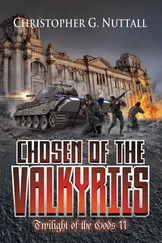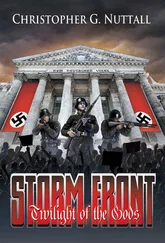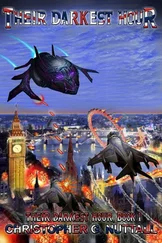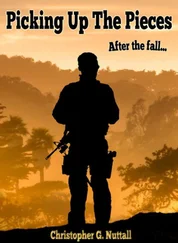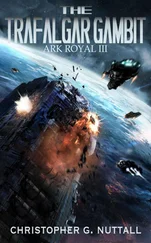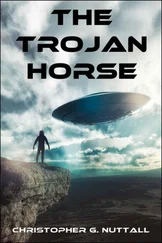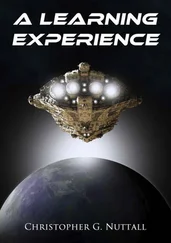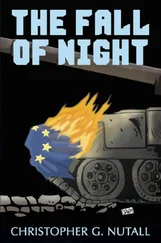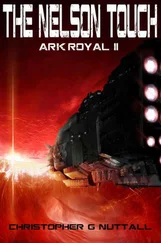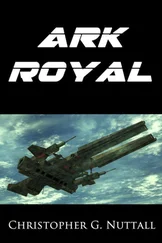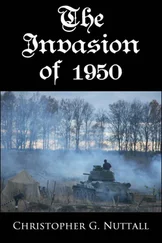Marius allowed himself a moment of relief once he saw how the enemy missiles reacted to the point defense —normally. His worst fear had been that Admiral Justinian had somehow developed a small FTL communications system, capable of being installed in a warhead, but it obviously hadn’t come to pass as he could tell that the missiles were on their own. The time delay made it impossible for the enemy to steer them directly.
Better yet, Justinian hadn’t even launched gunboats to give his missiles some additional support.
And then—Marius clenched his fists in rage as hundreds of missiles broke through the point defense. Many died once his ships switched to self-defense and used short-ranged pulsars to destroy the missiles, but others made it to their targets and rammed home. Antimatter warheads detonated against shields, knocking them down and allowing the tearing power of matter-antimatter annihilation to hammer away at the naked hulls. Some of the targeted ships were lucky and survived, if damaged; others were destroyed before their crews had a chance to run for the lifepods and escape. He kept his face as expressionless as possible once the damage reports started to come in. Seventeen ships had been destroyed, and over thirty were damaged. Four were on the verge of losing their drives and falling out of formation.
“Admiral, Rose Tyler reports that her drive is failing,” the communications officer reported. “Her commander is requesting permission to fall out of formation.”
“Denied,” Marius said. Rose Tyler was a light cruiser, armed and equipped as an additional point defense platform. On her own, however, she would be rapidly overwhelmed and destroyed—or worse, captured. Admiral Justinian had tried to capture the Enterprise and might try to board other ships, or force them to surrender. “All ships are to remain in formation as long as possible, and then attempt to surrender, following standard protocols.”
He scowled. There was no way around it. Some ships were going to be lost. The standard protocols had been drawn up when humanity had first fought the Snakes and hadn’t been revised since then, even during the Inheritance Wars. The crews would destroy the starship’s computers and drives, rendering the ship useless for anything other than scrap. The classified data in the ship’s computers would be lost, a vital consideration when fighting aliens who wouldn’t know anything about the Federation’s network of military bases and rapid reinforcement forces. Much of the data would already be known to Admiral Justinian, he knew, but there was no way to know what might help him plot his next move.
The enemy ships were already firing a second salvo of missiles, followed rapidly by a third. His own salvo was just entering attack range, forcing the enemy to concentrate on their own defense, just for a moment. He scowled as Bogey Two started to come within range as well, offering the threat of vastly increased missile salvos. At least his starfighters were having an impact, even though he knew that most of those fine young men would be lost. He quickly checked the mass limit reading, and scowled again. If they could just hold out for a few more hours, they would be able to escape. If…
“Multiple hits on Bogey One,” the tactical officer reported. “Five of their superdreadnaughts are falling out of formation.”
Marius smiled tiredly. Maybe they could pull it off after all.
“Continue firing,” he ordered. At this rate, they would shoot their magazines dry before too long, leaving his ships defenseless. The enemy would have the same problem, but standard doctrine insisted that superdreadnaughts be escorted by ammunition ships in battle. Transferring missiles from transports to superdreadnaughts at speed wasn’t easy—and sane officers blanched at the dangers—but it could be done. “Knock as many of their ships out of formation as you can.”
“Aye, sir,” the tactical officer said.
* * *
“The remaining invaders are surrendering, captain,” Elf’s voice said over the intercom. “Do you want us to secure the prisoners?”
Roman wondered absently if she knew how unlike a captain he was feeling. Enterprise might have linked up with the remainder of the fleet, yet they were still in battle—and still vulnerable. The carrier’s point defense had taken a battering, and her drives were dangerously unstable.
“Captain?” she asked.
“Yes, go ahead,” he ordered, even though he felt like a fool. Elf had vastly more combat experience than he did. “Confine them as best as you can and then report to the damage control master.”
He clicked off the intercom and stared down at the internal systems display. Enterprise had been vastly overpowered for her size, something that had saved the ship’s life. Commander Duggan had told him that certain admirals had wanted large starships to serve as their flagships, insisting that the ship be built to their personal specifications. The Federation Navy could have built four fleet carriers for the cost of one Enterprise , but that very overdesign had saved their lives when a standard fleet carrier would have been destroyed. The starship might look like Swiss cheese from the outside, yet she was still going strong.
Or maybe not , he thought sourly. One of the drives had been destroyed in the attack and two more were showing alarming harmonic fluctuations, which suggested they were on the verge of burning out. Losing one wouldn’t be fatal; losing both of them would mean that Enterprise would have to drop out of formation, exposing her to the tender mercies of Admiral Justinian, who might not feel like taking prisoners. Roman’s trick of waiting until the enemy battlecruisers had come within point-blank range would hardly encourage the enemy to accept an offer of surrender. They’d be more likely to put a missile in the carrier’s hull instead.
He pulled up the starfighter display and shivered. There were no organized flight groups and squadrons, not any longer. Instead, pilots were flying with whatever wingmen they could find and rearming at whatever carrier could take them. The perfect organization of the Retribution Force was a thing of the past. If Enterprise fell out of formation…Admiral Drake hadn’t mentioned it, but Roman knew what his orders would be. Enterprise’s fighters would transfer to another carrier and the fleet’s former flagship would make its final stand alone.
“The CAG is reporting that they’re having trouble transferring supplies from the holding bays to the flight decks,” Sultana reported. At least she sounded calm. Maybe she really was; Roman saw nothing more than a thin sheen of sweat on her forehead. “The damage control crews are asking for permission to cut through the bulkheads and transfer the supplies directly.”
“Check with the engineer,” he ordered. It felt like an abdication of responsibility, but he didn’t know if cutting through the bulkheads risked damaging the ship. “If he agrees, tell them to go ahead with it.”
He turned back to the main display. Enterprise wasn’t being targeted directly—he suspected that Admiral Justinian still wanted the carrier intact—yet there was always a possibility that one missile would lose its target and lock onto Enterprise as a substitute. Or perhaps the admiral would change his mind and decide to end Enterprise’s charmed life.
“Two hours to the mass limit,” the helmsman reported. “Once we cross, we can escape.”
Sultana looked over at him. “And go where? Can we double back and find a chain of Asimov Points leading home?”
Roman said nothing, as she was right. Asimov Points were far quicker than the stardrive. It would take years to get back to Earth without re-entering the Asimov Point network, which meant that Admiral Drake would have to head for another Asimov Point. And Admiral Justinian could certainly guess where he was going, and perhaps have a fleet in place to block their retreat…
Читать дальше

